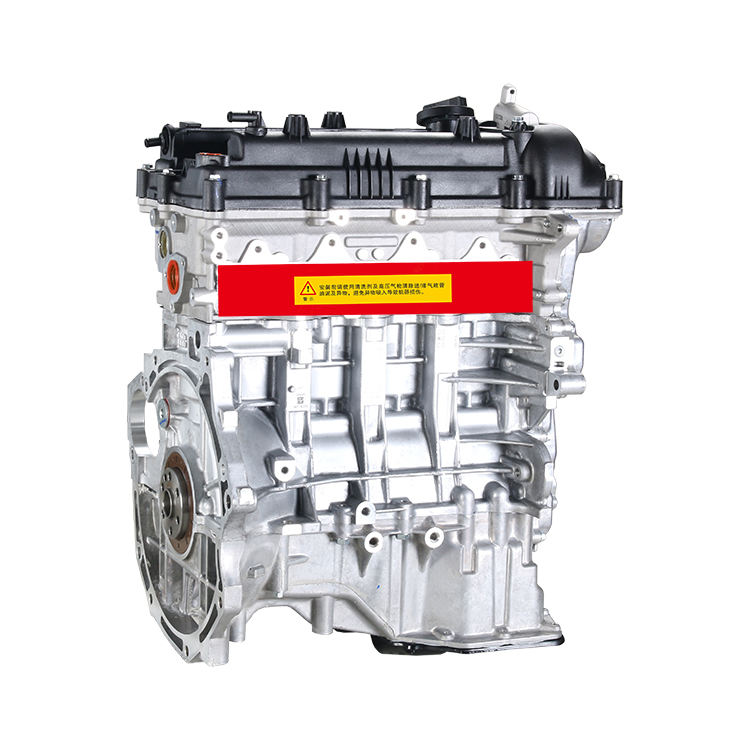Hyundai’s 1.6-liter G4FD or 1.6 GDI engine
was first introduced back in 2009 and is installed in a number of popular Hyundai models such as the Tucson, Veloster and Soul. This motor belongs to the Gamma II line and is distinguished by a direct fuel injection system.
Gamma family: G4FA, G4FL, G4FS, G4FC, G4FD, G4FG, G4FJ, G4FM, G4FP, G4FT, G4FU.
In 2010, the GDi direct fuel injection unit debuted as part of the Gamma II line. This is a completely modern engine with an aluminum block, thin-walled cast-iron liners, a 16-valve cylinder head without hydraulic lifters, an injection pump driven by an exhaust camshaft, a timing chain drive and a proprietary Dual CVVT phase control system on two camshafts. There is also a plastic intake manifold with a VIS geometry change system.
The engine was installed on:
Hyundai Accent 4 (RB) in 2010 – 2017; Accent 5 (YC) since 2017;
Hyundai Elantra 5 (MD) in 2010 – 2015;
Hyundai i30 2 (GD) in 2011 – 2017;
Hyundai i40 1 (VF) in 2011 – 2019;
Hyundai ix35 1 (LM) in 2010 – 2015;
Hyundai Tucson 3 (TL) since 2015;
Hyundai Veloster 1 (FS) in 2011 – 2017;
Kia Carens 4 (RP) in 2013 – 2018;
Kia Ceed 2 (JD) in 2012 – 2018;
Kia Cerato 2 (TD) in 2010 – 2012;
Kia ProCeed 2 (JD) in 2015 – 2018;
Kia Rio 3 (UB) in 2011 – 2017;
Kia Soul 1 (AM) in 2011 – 2014; Soul 2 (PS) in 2013 – 2019;
Kia Sportage 3 (SL) in 2010 – 2015; Sportage 4 (QL) since 2015.
Q: Do Hyundai engines last as long as Hondas or Toyotas?
A: Hyundai's in the 90s where pretty poorly; its 2020.
For the last 5 years or so (and there's always model differences) Hyundai has been outranking Honda on reliabilty and rather close to Toyota (and I feel that Toyota has a bit of a “glow” of reliability that makes its fans a bit sensitive to any suggestion at all its not perfect).
Everyone makes ringers and everyone makes duds, so a brand only tells you so much about a give example. Even corollas can lemon, and there's a Deawoo with 400k on the clock somewhere.
Hyundai’s just lack features, certain vehicle types, and polish. They tend to be pretty generic and the cabins are really loud. And where they do have issues it is sub-systems like AC, etc.
There are also power differences. Like Hyundais are a little weaker across the board (yet in 2020s they are all monsters of HP compared to 2000s)
But the core difference is right there on the MSRP. The Honda and Toyota are “more car” for more money. Being a bit de-tuned the hyundais are rather utilitarian.
Bias:
Mother loves Honda's/My sister loves her Korean cars; in-laws love Toyota's.
I still just for style/ fun prefer 2nd level JDM like Nissan/ Mazzda / mitsu…
But drive a ford because its comparatively very cheap, works, and easy to fix. As a mechanic I can fix a ford in a weekend no matter the issue/ model which for me is the prime concern.
Also, had Hondas stolen way too many times.
Edit: this has gotten popular. So I guess its fair to include my experience with the 90s models… mother had 2 engine and 2 transmission failures on an elantra in under a year.
I was stuck with her on the side of the road.
She later bought a honda and by 300k miles had no issues save a transmission rebuild and and engine replacement (her fault on overheating).
But I just want to point that out when everyone talks about the “shinning example” of other makes or Hyundais.
I because of that still avoid them; the numbers are the numbers. As a mechanic I've serviced lots of “reliable” brands that bit it early too.
Yet I'll stick to my guns on 1 thing. Toyotas aren't “magically exempt” from issues either.
Every car breaks is my main thesis.
Q: How long does a Hyundai engine last?
A: The engine resource is 180,000 km, after which the engine can be thrown out. Practice shows that with good care, some motors run 400,000 or more kilometers. I only recommend changing engine oil more often - once every 7,500 - 10,000 km, fill fuel at branded gas stations and prevent engine overheating.
MESSAGE
Please contact us now, your inquiry will be answered soon!





